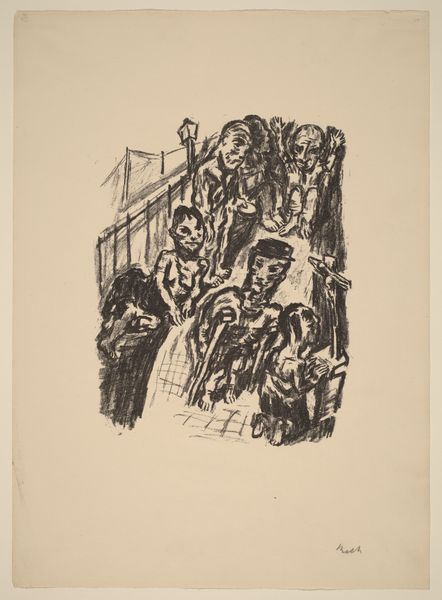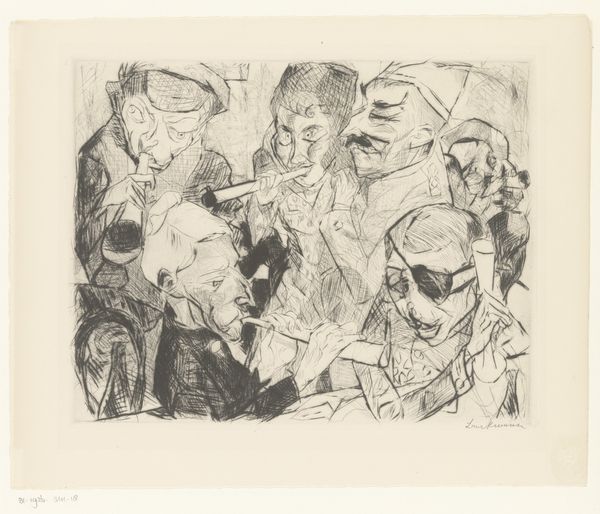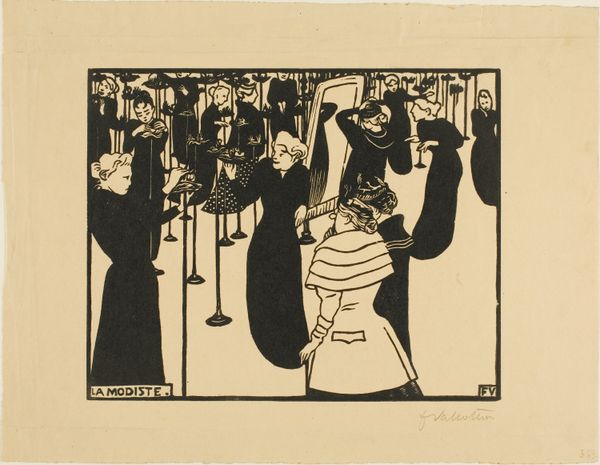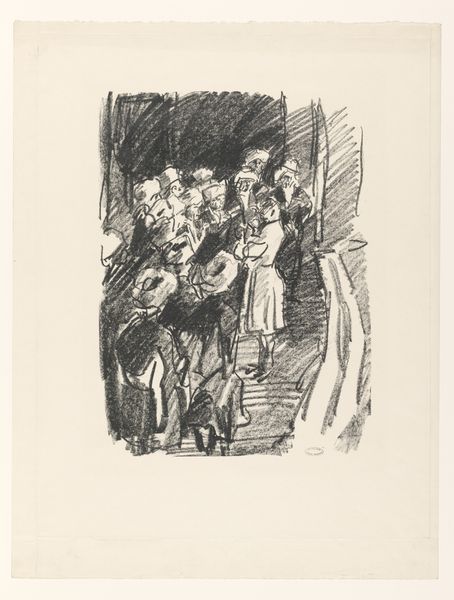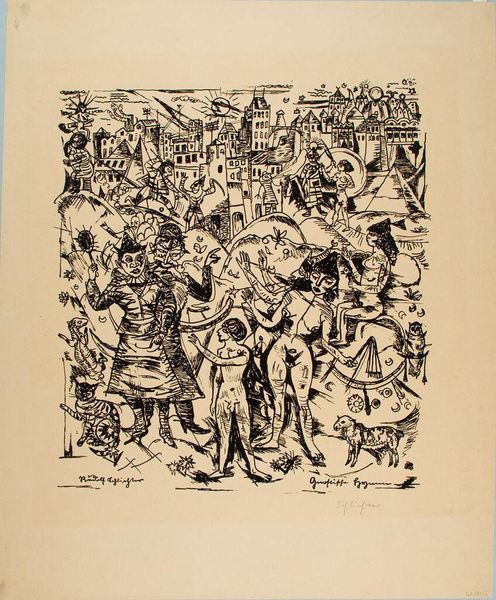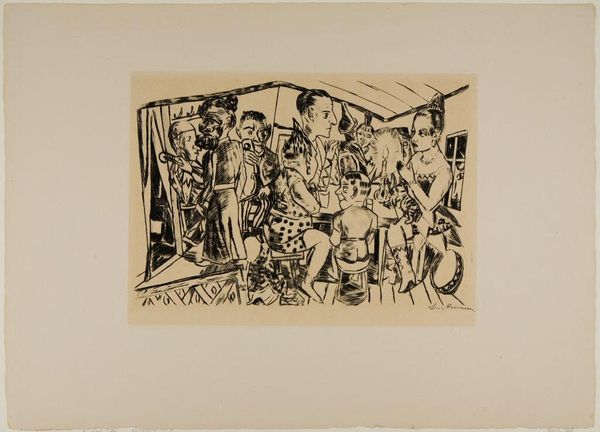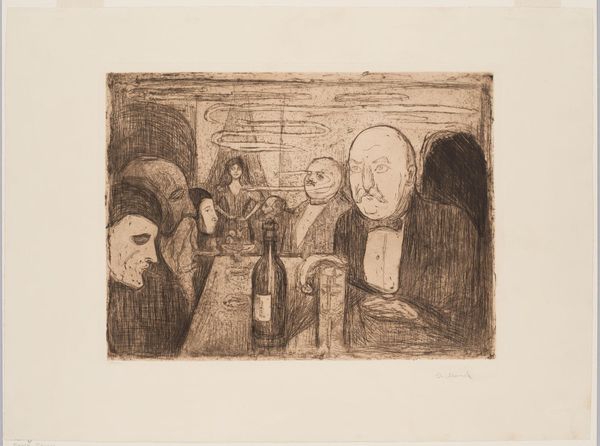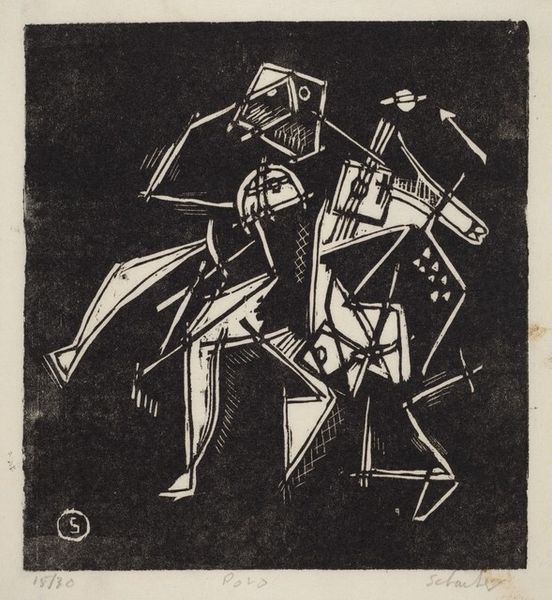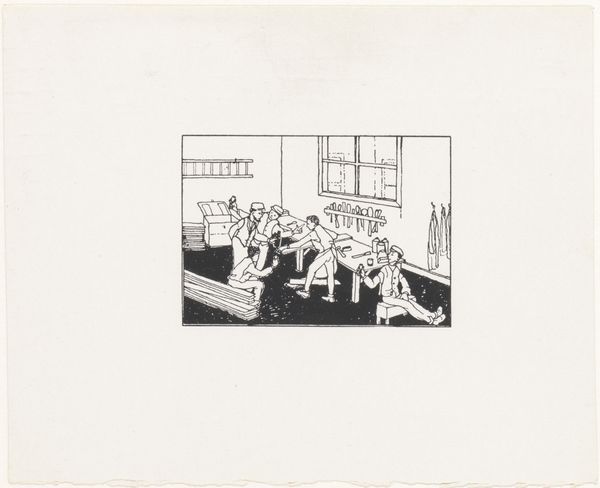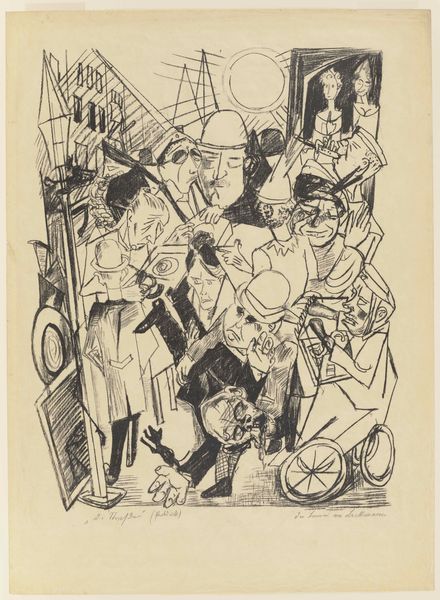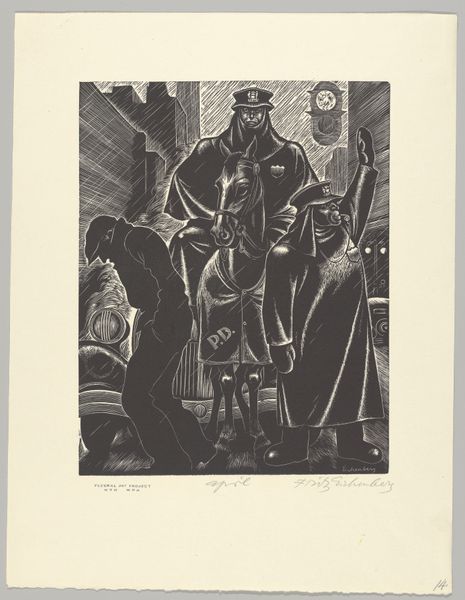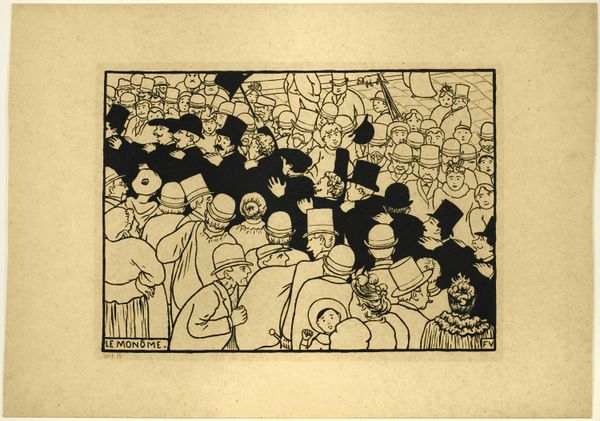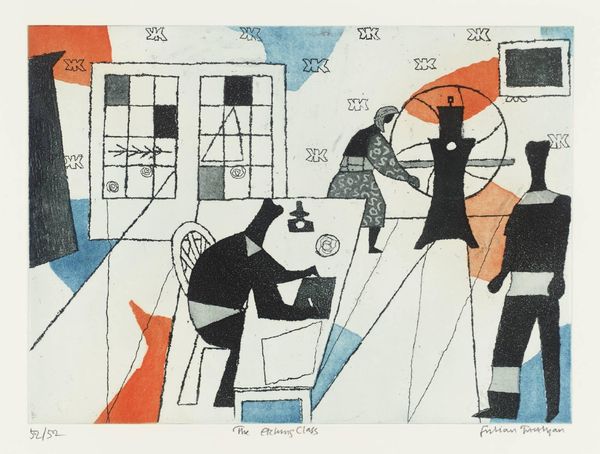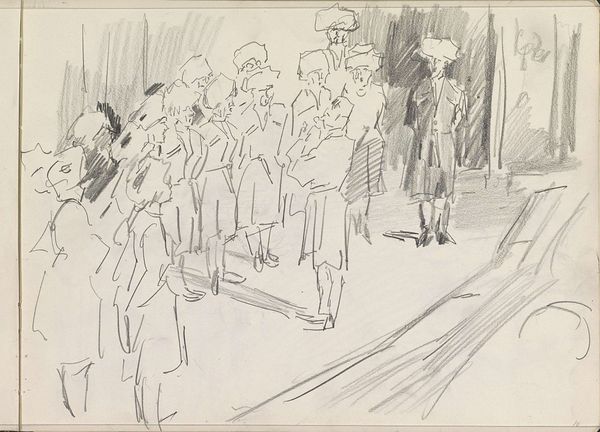
print, woodcut
#
portrait
# print
#
german-expressionism
#
figuration
#
expressionism
#
woodcut
#
line
#
history-painting
#
monochrome
Copyright: Public Domain: Artvee
Curator: This woodcut is titled "Gerichtsszene aus Shaw’s heiliger Johanna," or "Court Scene from Shaw's Saint Joan," created by Ernst Ludwig Kirchner in 1925. What stands out to you first? Editor: A feeling of stifled power—oppression, really. The stark color blocks and crude, heavy lines project a sense of dread and imminent injustice. Curator: Indeed, Kirchner’s utilization of the woodcut medium is crucial. The gouges and cuts he makes directly into the wood dictate the composition. Note how he deploys a limited palette: the monochrome offset by aggressive red accents. The graphic lines create dramatic planar relationships and intense visual rhythms across the surface. Editor: That intense red pulls the eye immediately to the figures on the left. They are clad head-to-toe, reminiscent of executioners or inquisitors, hooded and faceless. It emphasizes the idea of unseen, unaccountable power. Then you have the more clearly defined, seated figures. I interpret these as members of the court, of the establishment. Kirchner cleverly juxtaposes these opposing powers, almost making them seem theatrical. Curator: Absolutely, it's staged. Observe how Kirchner places the main figures in a very shallow space, compressed to the foreground plane, reminiscent of theatrical tableaux. This flatness accentuates the emotional and psychological tension rather than any illusion of depth. Also note how his style deliberately diverges from naturalistic representation. Editor: The figure of Joan herself, I presume, stands in stark contrast. She seems almost illuminated, despite the prevailing gloom of the woodcut medium. Her stance is both defiant and vulnerable, highlighted against the rigid geometry surrounding her. This isn't just a depiction of a court scene; it embodies a clash of ideologies, a rebellion against conformity. Curator: Very well put. In considering Kirchner’s larger body of work and context, you see how these distorted forms and jarring juxtapositions become a visual language for the psychological turmoil prevalent in Expressionism. The formal elements here, line and color, are intentionally deployed for maximum emotional impact. Editor: Studying Kirchner's woodcut offers us insights into historical themes of power and justice. Moreover, it demonstrates how visual symbols condense cultural anxieties across centuries. Curator: I agree, and through Kirchner’s sharp, uncompromising visual language, "Court Scene from Shaw's Saint Joan" speaks to a legacy of injustice.
Comments
No comments
Be the first to comment and join the conversation on the ultimate creative platform.
